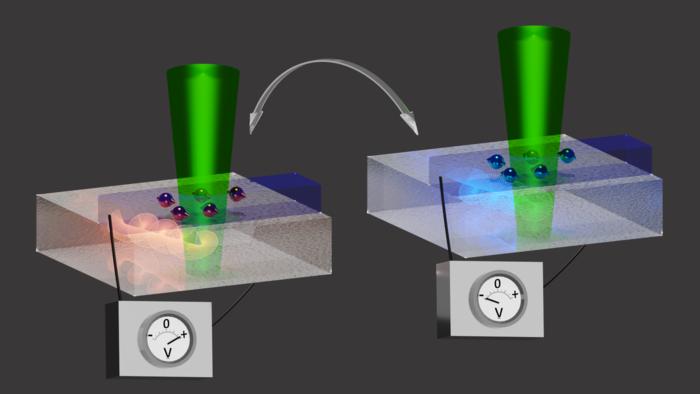In 2023, a groundbreaking development emerged from the École Polytechnique Fédérale de Lausanne (EPFL) where researchers successfully leveraged spin waves, a form of charge-free magnetic waves, to transmit and store data. This innovation represents a significant departure from the conventional reliance on electron flows, heralding a new chapter in the quest for sustainable computing. The research team, guided by the relentless pursuit of knowledge and practical applications, embarked on a journey that led them to explore the unique properties of spin waves. Their investigations opened a window into an entirely new domain of computational potential, one that hinges on harnessing the efficiency of magnons—quasiparticles associated with spin waves.
The essence of their work lies in the ability to reverse the magnetization states of tiny nanomagnets using radiofrequency signals to excite spin waves. This transformation is reminiscent of switching between binary states, akin to the fundamental mechanics of digital information storage. The overarching implications of this research transcend mere technological curiosity; it points toward a future where computing methods can mitigate the energy losses—often termed Joule heating—that plague traditional electronic devices. The researchers’ approach thus embodies a paradigm shift toward eco-friendly computing solutions, capable of revolutionizing information and communication technologies.
Despite these accomplishments, the prototype systems initially developed had limitations. The spin wave signals could not effectively reset the magnetic bits to allow the overwriting of existing data. This impediment tempered the enthusiasm surrounding the technology, emphasizing the need for further exploration and refinement to realize the full potential of spin-wave-based data encoding. However, the researchers remained undeterred, driven by curiosity and scientific inquiry to push the boundaries of what was possible with their findings.
The collaborative efforts between Grundler’s lab at EPFL and researchers at Beihang University in China led to a pivotal discovery: the exceptional properties of hematite, an iron oxide compound. This material is both earth-abundant and environmentally friendly, offering a sustainable alternative to materials traditionally employed in spintronics, such as yttrium iron garnet. The research team detailed their findings in a publication within “Nature Physics,” shedding light on hematite’s capabilities, which extend beyond sustainability to the realms of high-frequency signal processing.
The unexpected nature of this discovery unfolded through the keen observations of EPFL alumnus Haiming Yu, currently a professor at the Fert Beijing Institute. Yu identified unusual electrical signals emanating from a nanostructured platinum stripe located on hematite. The peculiarities of these signals hinted at phenomena not previously documented in conventional magnetic materials, prompting Yu’s team to engage the expertise of Grundler’s group for further analysis. Such interdisciplinary collaboration illustrates the potency of collective scientific effort in unraveling the underlying principles governing new physical phenomena.
During the subsequent examination, Grundler’s team made an astute observation that would alter the trajectory of their research. They noted a distinct ‘wiggle’ in the spatial distribution of magnon signals. This observation served as a catalyst for the discovery of interference patterns between two separate excitation modes of spin waves, or magnon modes. The research conducted by EPFL PhD student Anna Duvakina utilized light scattering microscopy to discern that the strange signals correlated with these interference patterns. This critical turning point instigated a deeper understanding of magnon behavior within the hematite matrix.
The significance of having two magnon modes cannot be overstated; it enables spin currents to be manipulated more flexibly. This capability implies that devices could potentially switch back and forth between different polarizations while simultaneously controlling magnetization states of nanomagnets. The ability to dynamically reconfigure magnetic states paves the way for advanced data encoding and storage methodologies, allowing for unprecedented scalability and efficiency in information systems. It signals a step toward overcoming the challenges posed by existing methodologies in data management.
As the research elucidates, hematite’s magnetic properties, long deemed insufficient for practical applications, are now showcased as fundamentally advantageous in cutting-edge contexts. Its performance surpasses that of traditional materials optimized decades ago for microwave electronics. This revelation epitomizes the unpredictable nature of scientific inquiry, where established notions can be challenged and overturned by new insights. With hematite, the researchers can now present a material that is both sustainable and functional in the ever-evolving landscape of spintronics.
The implications of this development are far-reaching, as researchers contemplate the future of next-generation devices. These insights not only elevate the material’s significance but also hint at broader applications in advanced computing technologies. As the field of spintronics continues to mature, hematite stands as a symbol of innovation rooted in both practical application and environmental consciousness. The amalgamation of sustainability and performance in material science has never been more critical.
With this foundation laid, the next phase of research will involve the construction of nanomagnets onto hematite devices, thus testing the theoretical models proposed based on this intriguing interaction of magnon modes. The anticipation surrounding this next step encapsulates the thrill of scientific discovery—an endless pursuit fueled by curiosity, innovation, and the desire to uncover solutions to complex challenges. As the researchers embark on this phase, the scientific community watches with keen interest, eager for the advancements that lie ahead in the field of magnon-based computation.
The emergence of spin-wave computing is not merely a scientific evolution; it embodies a transformation with the potential to redefine the technological underpinnings of society. Researchers are optimistic that the advancements born from this wellspring of inquiry may lead to efficient and responsible methods of data encoding and storage, heralding a new era in computational capabilities. As they forge ahead, the collaborative spirit, resilience, and ingenuity of the scientific community remain at the forefront, ensuring that the future of technology is bright and vibrant.
Subject of Research: Spin wave-based computation using hematite
Article Title: Control of spin currents by magnon interference in a canted antiferromagnet
News Publication Date: 23-Apr-2025
Web References: Nature Physics
References: 10.1038/s41567-025-02819-7
Image Credits: © Anna Duvakina/LMGN EPFL
Keywords
Tags: advancements in spin wave technologycharge-free magnetic waveseco-friendly information technologyenergy-efficient data storageEPFL innovative researchfuture of quantum computingJoule heating reduction strategiesmagnon-based data transmissionnanomagnet magnetization techniquesspintronics research breakthroughssustainable computing solutionssustainable materials in electronics






